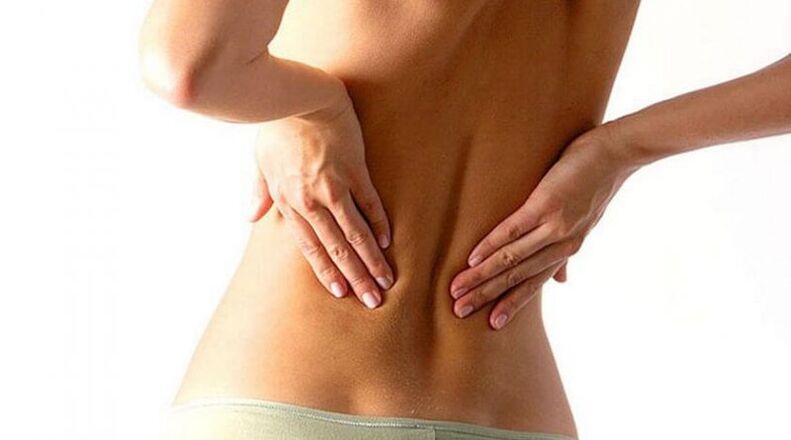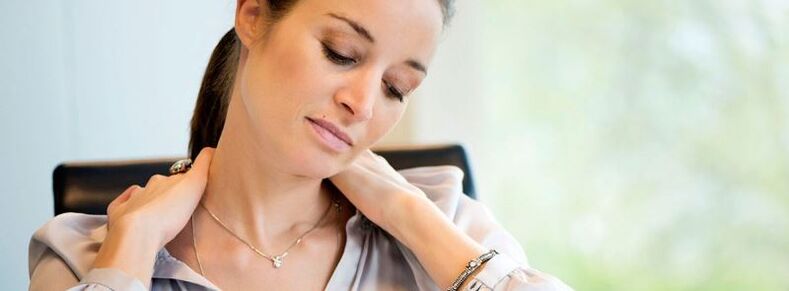
Osteochondrosis of the spine is a disease that affects the cartilaginous structures that make up the intervertebral discs of the human body. These discs ensure the mobility of the spine, allowing for movement and flexibility.
Osteochondrosis disrupts the structure of such plates, their structure changes. Since the process of destruction of these plates is irreversible, curing the disease is impossible. But with proper treatment, you can stop the development of the disease, slow it down and gain time during which the mobility of the spine is preserved.
If the disease is not stopped in time, then after the destruction of the intervertebral discs, the destruction of the vertebrae themselves begins.
Important!Ignoring osteochondrosis inevitably leads to complications, forced reduction of physical activity, deterioration of quality of life and sometimes disability.
One of the most common complications of osteochondrosis is osteophyte. This is the name of the bony outgrowths that appear along the edges of the vertebra. The appearance of such an increase can be caused by long-term stress on the spine or an unstable spinal movement segment.
Causes and symptoms of osteochondrosis
Experts cite the incorrect distribution of the load on the spine as the main reason for the development of osteochondrosis.
However, the process can be triggered by hypothermia of a part of the body or the whole body, excessive physical stress on the back in general and especially on the spine, as well as injury to the spine (blows to the spine, sharp turns, shocks and any physical impact that can cause displacement of the vertebrae).

Osteochondrosis has many minor causes. Usually, a person who has received such a diagnosis can identify 7-10 reasons from this list that triggered the development of the disease in the given case.
So, below are the minor but important reasons that cause the destruction of intervertebral discs. Avoid this in order not to find out what osteochondrosis is:
- stooping and poor posture (cause curvature of the spine)
- weak back muscles (therefore the entire load falls on the spine)
- he is constantly in an uncomfortable position
- excessive physical activity related to lifting and carrying heavy objects, strengthening sports
- spinal injuries
- lack of nutrition or excessive nutrition, which causes metabolic disorders
- overweight
- permanent session
- tension
- hormonal disorders
- bad heredity
- aging
As you can see, there are quite a few reasons. The symptoms of this disease are also varied. Osteochondrosis manifests itself in different people, but usually the following symptoms are observed during osteochondrosis:
- severe back pain
- numbness in the arms or legs (sometimes both at the same time)
- headache turning into migraine
- pain and soreness in the neck and limbs
- dizziness, colored spots before the eyes, sometimes loss of consciousness
- cold hands and feet
- characteristic pain in the chest (as in intercostal neuralgia) and in the region of the heart
- painful movements
Occurrence of osteochondrosis
Interesting: some doctors believe that osteochondrosis is not a pathology, but a natural change in the human body.

One way or another, it is difficult to find a person with a long liver who has never suffered from back pain in his life. According to various sources, osteochondrosis affects 40-80% of all people on Earth.
A person usually notices the first signs of osteochondrosis at the age of 35-50. It has a lot to do with your lifestyle.
And if for some people the first symptoms appear in adolescence due to bad heredity, then for the majority the symptoms appearing after the age of 50 are considered the norm.
This is due to the fact that by the age of 45, the human body stops accumulating water in the intervertebral discs, and the level of collagen necessary for the health of the joints inevitably begins to decrease.
In some people, the intervertebral discs can even be squeezed out. This causes pain and is called sciatica.
Stages of osteochondrosis
There are 4 main stages of the development of osteochondrosis.
- It all starts with the drying out of the nucleus pulposus. The annulus fibrosus is covered with fissures as the height of the intervertebral disc decreases. At this stage, pathology is difficult to notice, since all changes occur in the intervertebral disc. No back and neck pain yet.
- As the height of the intervertebral disc decreases, the muscles and ligaments sag. This is due to the convergence of the attachment points of the muscles and ligaments. Initially, they are attached to two adjacent vertebrae, but when the distance between these vertebrae decreases, it affects only the muscle tissue.
- The third stage is characterized by the fact that the changes become accentuated. Prolapses occur, as well as a phenomenon such as disc protrusion. Protrusion prevents the occurrence of intervertebral disc herniation. As a general rule, the development of the disease can be stopped at this stage, because the fibrous ring is still intact, and it is still possible to try to restore it. But since the protrusion does not cause pain, few people seek help from a doctor at this stage.
- In the last stage, the fibrous ring breaks. At the site of disc destruction, the body mobilizes to compensate for the excessive mobility of the vertebrae, and osteophytes appear on the vertebrae.
Diagnostics
Before starting the treatment of osteochondrosis, it is necessary to make a diagnosis and determine at what stage the disease is currently developing.
Important!The diagnosis of osteochondrosis is impossible without first collecting the anamnesis.
If you notice symptoms of osteochondrosis, listen carefully to your body.

The more you tell the doctor about your feelings, the faster and more accurately he will be able to make a diagnosis and begin appropriate treatment. Do not think that there will be too much information: ask your relatives if they have had the manifestation of this disease. Family anamnesis helps to more accurately determine the cause of osteochondrosis.
After the doctor has finished collecting the anamnesis and has concluded from your complaints that it is most likely osteochondrosis, he will recommend an X-ray examination.
If for some reason this type of test is not suitable for you, your doctor may also recommend an MRI or CT scan. However, these tests are not mandatory under the compulsory health insurance program, so you have to pay for them. Consider their high cost.
As a last resort, myelography is used to diagnose osteochondrosis. This is a painful and dangerous procedure where the doctor injects dye directly into the spinal canal.
How is osteochondrosis treated?
Currently, the treatment of osteochondrosis is practiced in many clinics. Some procedures have a positive effect, while others only relieve pain. If you decide on one of the treatment methods, discuss this method with your doctor before starting treatment for osteochondrosis.
Currently, the most popular procedures are:
- magnetic piercing effect
- pharmacopuncture effect
- reflexology with needles
- vacuum effect
- electrical stimulation
- manual therapy
Many of these procedures are not intended to treat osteochondrosis, but to treat certain symptoms of osteochondrosis. Therefore, the doctor must coordinate the procedures. This is especially true for patients diagnosed with cervical osteochondrosis.
The fact is that osteochondrosis in the cervical spine is associated with symptoms such as numbness in the arms and legs. And this is no accident. The fact is that many nerve endings are concentrated in the neck area. And in this case, improperly selected treatment can turn cervical osteochondrosis into a full-fledged disability.
Surgical treatment
Spine surgery is such a serious undertaking that it is prescribed with great care and only when osteochondrosis is complicated by disc herniation. Such operations are not urgent, they are always carried out only according to plans. Before the operation, you will have to undergo a number of examinations and perform a number of tests.
Such operations are prescribed only when the doctor sees no other way out for treatment and realizes that without surgery the quality of life of a person will significantly deteriorate. Before surgery, doctors try to provide pain relief and supportive care.
Drug
Medications for this condition are primarily designed to reduce pain and increase collagen levels in the body.

However, it is worth remembering that collagen and other cartilage nutrients are absorbed not only by the spine, but by the entire body. So the effectiveness of such drugs is not very high.
Ointments that doctors recommend for the treatment of osteochondrosis are also primarily used to relieve pain during exacerbation.
Unfortunately, if you suffer from osteochondrosis, you will most likely need maintenance therapy for the rest of your life. In other words, your back will hurt from time to time, you cannot overexert yourself physically, especially you should avoid lifting heavy objects and straining your back and spine.
Aggravation of osteochondrosis
Aggravation of this disease can occur due to heavy physical strain on the back muscles. In addition, osteochondrosis can be aggravated by colds or infections, hypothermia, stress, pregnancy and hormonal changes. Weight gain also causes back pain.
Prevention
As a preventive measure, doctors offer many patients physical exercises designed specifically for people who suffer from this disease.

If your doctor has prescribed exercise therapy for you, you should check exactly what exercises are allowed for you. Exercises help maintain the tone of the ligaments and this reduces the load on the spine. Also, these exercises are very helpful for people who lead a sedentary lifestyle.
They can also prescribe a massage for preventive purposes. Depending on which part of the spine osteochondrosis has developed, the massage therapist will work in this area. This not only relieves pain, but also relaxes the muscles. Combined with exercise therapy, massage brings good results.
Try to avoid stress on the spine, do not lift heavy objects. If possible, dress warmly because. . . any hypothermia can cause exacerbation of osteochondrosis.
Living a full life with this disease is completely possible, don't forget to take care of your body and take care of yourself.


























